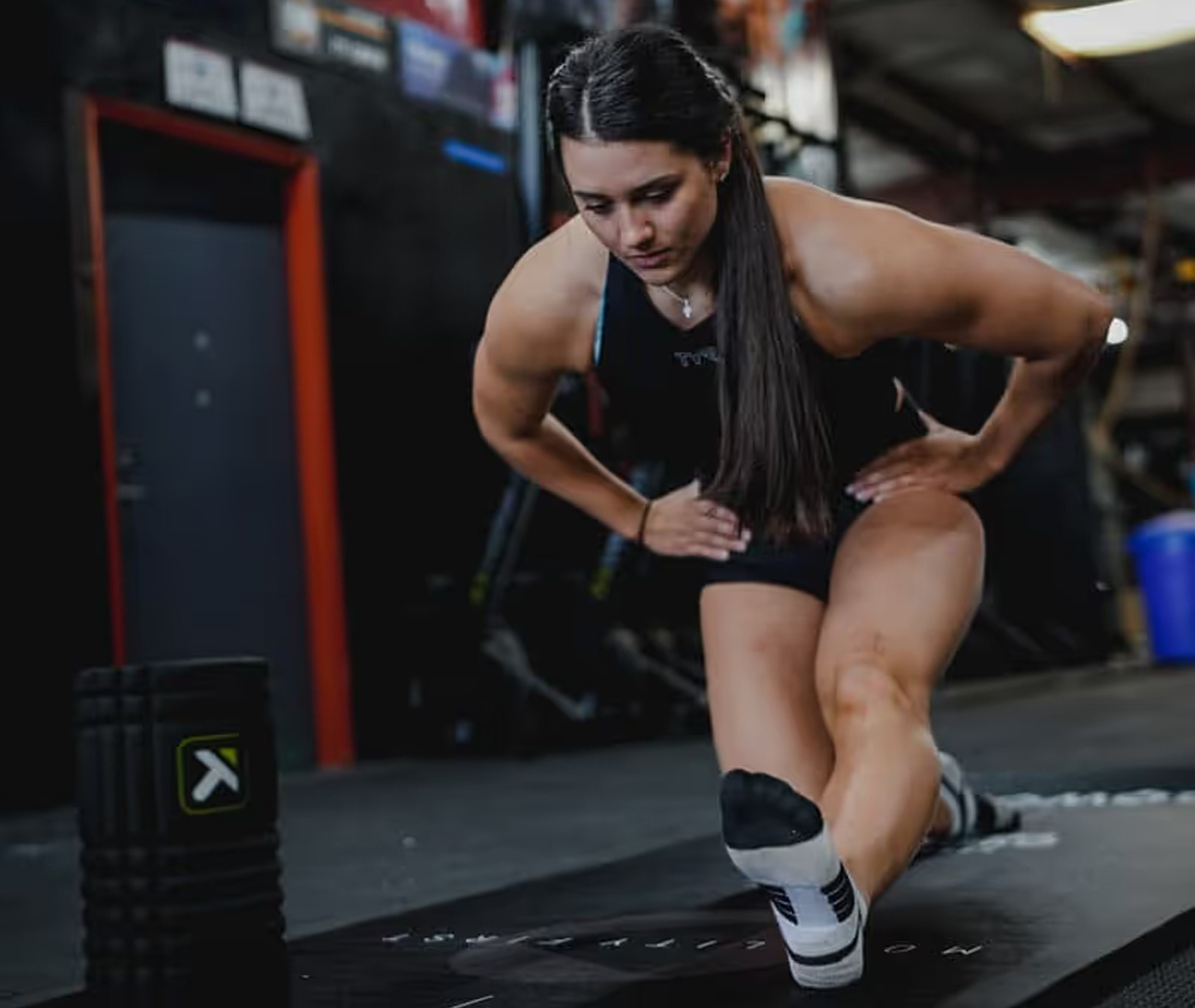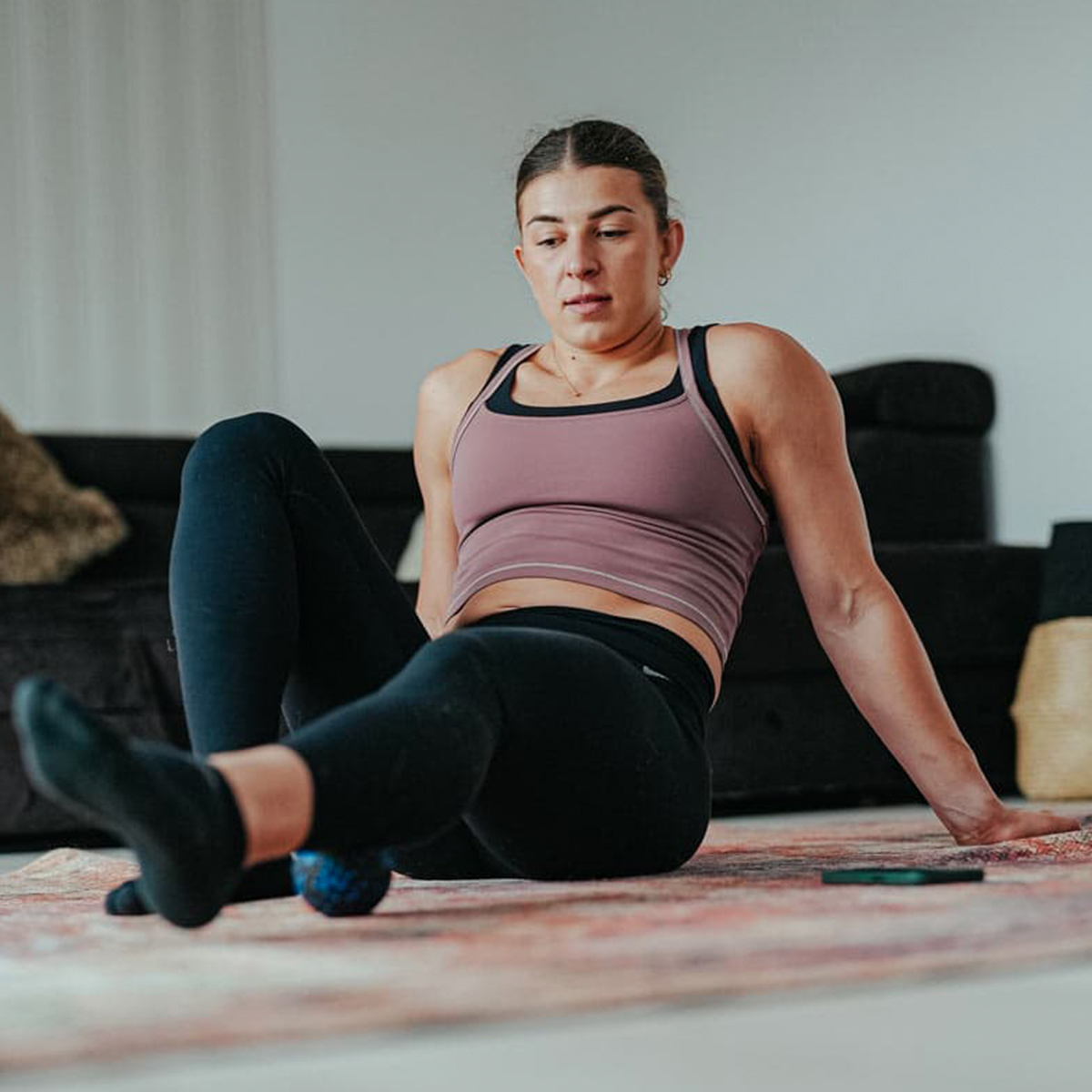
Whether running is the entire workout or an element in a WOD, it is important to prepare the legs for this dynamic movement to improve performance and decrease the risk of injury.
“Top 3” exercise recommendations from GOWOD contain one activation exercise, one stretch, and one foam roller exercise. This is because depending on the function of a body region for each movement in CrossFit, different methods of tissue preparation may be warranted. For each of the selected exercises, the goal is to improve workout performance without compromise.

The muscles of the calves, the gastrocnemius and soleus, are responsible for plantarflexion at the ankle joint (pointing the toes downward), which propels the runner forward during each running stride. Calf activation is a preferred muscle activation exercise to prepare these muscles and their associated tendons for running.
Running requires significant muscle activation of the muscles of the hip and thigh. On the front of the leg, the quadriceps extend the knee joint to propel the body forward while the hip flexors elevate the leg during the swing phase. On the back of the body, the hamstrings work together with the quads to flex and extend the knees and hips while the gluteal muscles are critical for power generation and upright alignment in the running stride. Knight to hamstring stretch mobilizes both the muscles on the front and back of the leg in preparation for or following a running workout.

The push-off phase of running requires a rapid stretch and forceful contraction of the muscles of the calves. Calf smash is an effective self-myofascial release technique to prepare the calves for a running workout and promote post-workout recovery. Calf smash can also improve flexibility and alleviate muscle tension, which can improve running performance and decrease calf discomfort.

Ready to try calf activation, knight to hamstring stretch, and calf smash to prepare for your running workout? Try GOWOD now.
Take our FREE mobility and flexibility test to identify your strengths and areas for improvement. In minutes, get a detailed breakdown of each body zone with insights and personalized guidance to progress.
You’re only 3 steps away from unlocking your full potential.
